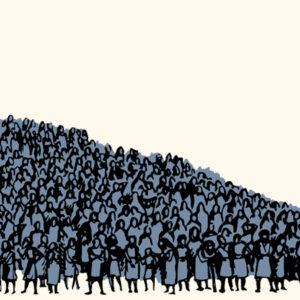
What's worth more than the rarest book in American literature? The answer may (not) surprise you.
You can read Bradford Morrow on Poe’s Tamerlane here.
Auctions are unpredictable beasts. If you approach them thinking you know how they will behave, you do so naively. Some lots sell far higher than expected, others much lower, and there’s often no explaining why. Competition can be furious as the auctioneer fields bids from potential buyers on the phone, online, and from collectors and dealers in the salesroom. And then, sometimes all three platforms stall out and a rarity like Ernest Hemingway’s first book, Three Stories & Ten Poems (1923), untrimmed and unopened in its fragile glassine jacket, gets “bought in”—auction-speak for fails to sell.
The Dr. Rodney P. Swantko sale held at Sotheby’s on June 26, which offered not just the rarest book in American literature, Edgar Allan Poe’s Tamerlane, of which there are only twelve known copies, but a staggering array of high spots of nineteenth and twentieth century literary books and manuscripts, was full of surprises. And one surprise in particular.
To wit, no one had predicted that the cover art for Harry Potter and the Philosopher’s Stone would go for a higher price than Poe’s Tamerlane ($420,000), a first edition of Melville’s Moby-Dick in the rare blue first binding ($21,600), a first issue of Leaves of Grass ($132,000), Lolita inscribed by Nabokov to Graham Greene with a butterfly drawing ($264,000), Charles Dicken’s A Christmas Carol inscribed to his close friend Walter Savage Landor in the year of publication ($228,000), The Great Gatsby in its rare and iconic dust jacket, gifted to Zelda’s sister and brother-in-law ($336,000), an inscribed first edition of The Wonderful Wizard of Oz ($108,000), Kerouac’s On the Road inscribed to Joyce Johnson ($120,000), and the earliest known Poe autograph manuscript in private hands, “In an Album—to a River” ($216,000) combined.
 Thomas Taylor’s Original Illustrations of Harry Potter. Courtesy of Sotheby’s Books & Manuscripts Department.
Thomas Taylor’s Original Illustrations of Harry Potter. Courtesy of Sotheby’s Books & Manuscripts Department.
And yet, at $1,920,000, it did. With many thousands to spare. The most significant extant Sherlock Holmes manuscript, Arthur Conan Doyle’s The Sign of the Four, brought just exactly half that amount ($960,000). Boy Wizard bests the Master of Deduction? Sidney Paget’s original 1893 pen-and-ink wash drawing of Holmes and Professor Moriarty struggling above the Reichenbach Falls, which illustrated “The Adventure of the Final Solution,” came in above the high estimate of $350,000. But Harry, standing in front of the Hogwarts Express, wearing his Gryffindor scarf, brought the highest price in the auction.
“It’s a ‘lately’ world,” quipped my bookseller friend Dan Wechsler, of Sanctuary Books, by way of explaining the outsized difference between what this piece of Potteriana and the rest Swantko’s collection realized. (In fairness,Thomas Taylor’s watercolor and pencil on paper is as instantly recognizable a contemporary literary image as any I can think of.) Those of us in the room sat there, paddles silenced, as two telephone bidders anonymously ran up the price—a scene that readers of my novel The Forger’s Daughter will remember playing out with eerie similarity at the auction of a forged thirteenth copy of Tamerlane.
So yes, auctions are mercurial, unpredictable. Not even the world’s preeminent Edgar Allan Poe collector, Susan Tane, went to Sotheby’s expecting to come away as the only private collector in history to own two copies of his first book Tamerlane. Possibly the only other person since Calvin Thomas, who printed the pamphlet for Poe in 1827, to possess more than one. But she did, sitting near the front of the room toward the center, a look of serious determination set in her profile as she bid successfully on it, as well as two important Poe manuscripts.
The good news is that she is not just a collector but a philanthropist who famously gives away her books to a variety of institutions. When I asked her after the sale what were her plans for the rarest book in American literature, her face was relaxed as she said without a pause, “I want to find the right home for it. I plan on donating one of the copies.” Even if Tamerlane didn’t achieve a record price at the sale (Swantko himself set that years ago when he paid $682,000 for the book), the outcome could not have been better for Poe scholars and aficianados. Some library or museum will become the custodian of the eleventh copy even as Tane’s other copy will remain in private hands.
Bradford Morrow
Bradford Morrow is the author of nine novels and a short story collection. He is the founding editor of Conjunctions and has contributed to many anthologies and journals. A Bard Center Fellow and professor of literature at Bard College, he lives in New York City.



















